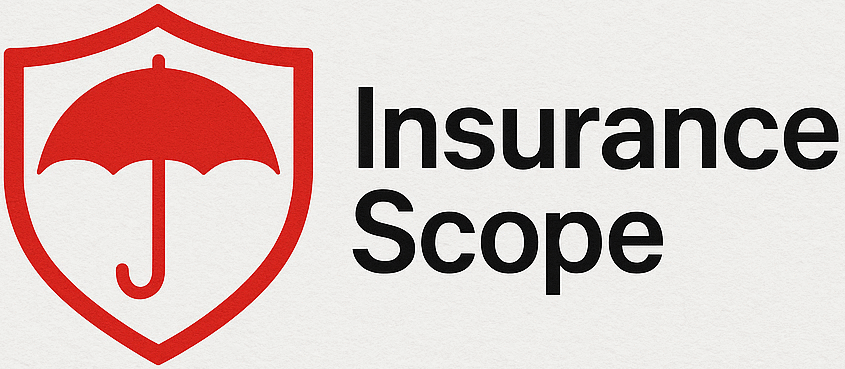
life insurance policy In today’s uncertain world, financial security has become a priority for every individual. Whether you are a student, a working professional, or the head of a family, ensuring the future safety of your loved ones is crucial. One of the best ways to secure this financial safety is by investing in a life insurance plan.
But here comes the most common question: “Which life insurance plan is best?” The answer isn’t as simple as naming one single plan because the best choice depends on individual needs, financial goals, and affordability. To determine the best option, you should consider which life insurance policy fits your requirements. It is essential to explore which life insurance policy will provide the most comprehensive coverage for your loved ones.
This article provides a complete guide to life insurance plans, explains life insurance installments, helps you identify how to check if a life insurance company is reliable, and assists you in selecting the best life insurance policy for your unique requirements. By understanding which life insurance policy is right for you, you can make an informed decision.
What is a Life Insurance Policy
A life insurance plan is a contract between you and an insurance provider. You pay a fixed installment (monthly, quarterly, or annually), and in return, the insurer provides money protection to your family in the form of a death benefit if something happens to you.
Some plan also come with additional benefits such as maturity payouts, investment options, or cash value.
Which Life Insurance Policy Should You Choose
When considering which life insurance policy to select, there is no one-size-fits-all answer to this question. The best life insurance plan varies depending on your financial condition, goals, and lifestyle. Let’s explore the most popular types:

There is no one-size-fits-all answer to this question. The best life insurance plan varies depending on your financial condition, goals, and lifestyle. Let’s explore the most popular types:
1. Term Life Insurance
- Definition: Provides coverage for a fixed term (10–30 years).
- Premium: Lowest among all plan.
- Benefits: High coverage at a low cost; pure protection.
- Drawbacks: No maturity benefit if you survive the term.
Best for: Young families and individuals who want maximum coverage with a limited budget.
Whole Life Insurance
- Definition: Coverage continues for your entire lifetime.
- Premium: Higher than term insurance.
- Benefits: Offers death benefit + builds cash value over time.
- Drawbacks: More expensive, but it combines insurance with savings.
Best for: Long-term planners, retirees, or those looking for wealth creation.
Universal Life Insurance
- Definition: Flexible plan where you can adjust installment and coverage.
- Benefits: Includes an investment component with potential growth.
- Drawbacks: Complex to understand and manage.
Best for: High-income individuals who want flexibility and investment growth.
Endowment Policy
- Definition: A mix of savings and insurance.
- Benefits: Provides lump sum on maturity + death benefit.
- Drawbacks: Higher installment compared to term plan
Best for: People who want disciplined savings along with protection.
Money-Back Policy
- Definition: Pays back a percentage of the sum assured at regular intervals.
- Benefits: Provides survival benefits during the plan term.
- Drawbacks: Death benefit reduces since payouts are made earlier.
Best for: Short-term money goals and people who need periodic returns.
Life Insurance Premiums Explained

One of the most confusing parts of buying insurance is understanding how life insurance installments are calculated. Let’s break it down.
Key Factors That Affect Premiums:
- Age
- Younger buyers pay less.
- Example: A 25-year-old may pay $20/month for term insurance, while a 45-year-old smoker may pay $100/month.
- Younger buyers pay less.
- Health Condition
- Healthy, non-smokers get lower instalment
- Medical history and habits directly influence costs.
- Coverage Amount (Sum Assured)
- The higher the coverage, the higher the instalment
- Policy Type
- Term insurance = cheapest.
- Whole life and universal = more expensive but include savings/investment.
- Term insurance = cheapest.
- Lifestyle & Occupation
- Risky jobs (pilot, miner) or habits (smoking, drinking) raise instalment.
Example: Premium Comparison
- Person A: 25-year-old, non-smoker → $20/month for $250,000 coverage.
- Person B: 45-year-old, smoker → $120/month for the same coverage.
This shows why starting young is the smartest choice.
How to Check If a Life Insurance Company is Reliable
Even the best plan becomes useless if the insurance provider is not trustworthy. Here’s how you can check if a life insurance company is reliable:
- Claim Settlement Ratio (CSR)
- Shows how many claims a company pays out vs. rejects.
- A CSR above 95% is considered excellent.
- Shows how many claims a company pays out vs. rejects.
- Financial Strength
- Check ratings from agencies like A.M. Best, Moody’s, or S&P.
- Check ratings from agencies like A.M. Best, Moody’s, or S&P.
- Customer Reviews
- Look for positive feedback regarding service and claim handling.
- Look for positive feedback regarding service and claim handling.
- Transparency of Policies
- Reliable companies explain terms clearly without hidden conditions.
- Reliable companies explain terms clearly without hidden conditions.
- Regulatory Approval
- Make sure the insurer is licensed and regulated by official authorities.
Red Flags to Avoid
- Low CSR (below 85%).
- Hidden charges or unclear terms.
- Negative customer feedback.
- Weak money ratings.
Always research before finalizing.
How to Select the Best Life Insurance Policy

Follow these steps to ensure you choose wisely:
- Define Your Goals
- Only protection? → Term Insurance.
- Protection + Savings? → Whole Life / Endowment.
- Flexibility? → Universal Life Insurance.
- Only protection? → Term Insurance.
- Evaluate Your Budget
- Don’t overcommit. Choose what you can consistently pay.
- Don’t overcommit. Choose what you can consistently pay.
- Compare Policies
- Use online comparison tools.
- Compare installment, benefits, and exclusions.
- Use online comparison tools.
- Check Reliability of Company
- Claim ratio, reviews, and ratings.
- Claim ratio, reviews, and ratings.
- Seek Professional Advice
- A money advisor can guide based on your situation.
- A money advisor can guide based on your situation.
Best Life Insurance Policy – Our Recommendation
- For young individuals → Term Life Insurance.
- For long-term wealth + security → Whole Life Insurance.
- For flexible premium & coverage → Universal Life Insurance.
- For savings-oriented people → Endowment or Money-Back plan
The best life insurance plan is not the cheapest or the most expensive, but the one that matches your goals and ensures your family’s money security.
Conclusion
life insurance policy Choosing the right insurance is one of the most important financial decisions you will ever make. If you’re wondering “Which life insurance policy is best?”, the answer depends on your age, budget, and long-term goals.
FAQs
1: Which life insurance policy is best for beginners?
Term life insurance – simple, affordable, and high coverage.
2: How are life insurance premiums explained in simple words?
instal the fixed amount you pay regularly to keep your plan active.
3: How do I know if a life insurance company is reliable?
Check claim settlement ratio,moneyl ratings, and customer reviews.
4: Can I change my life insurance policy later?
Some plan allow upgrades or conversions, but not all.
5: Which policy is best for long-term savings?
Whole life and endowment plans are best for savings + protection.





